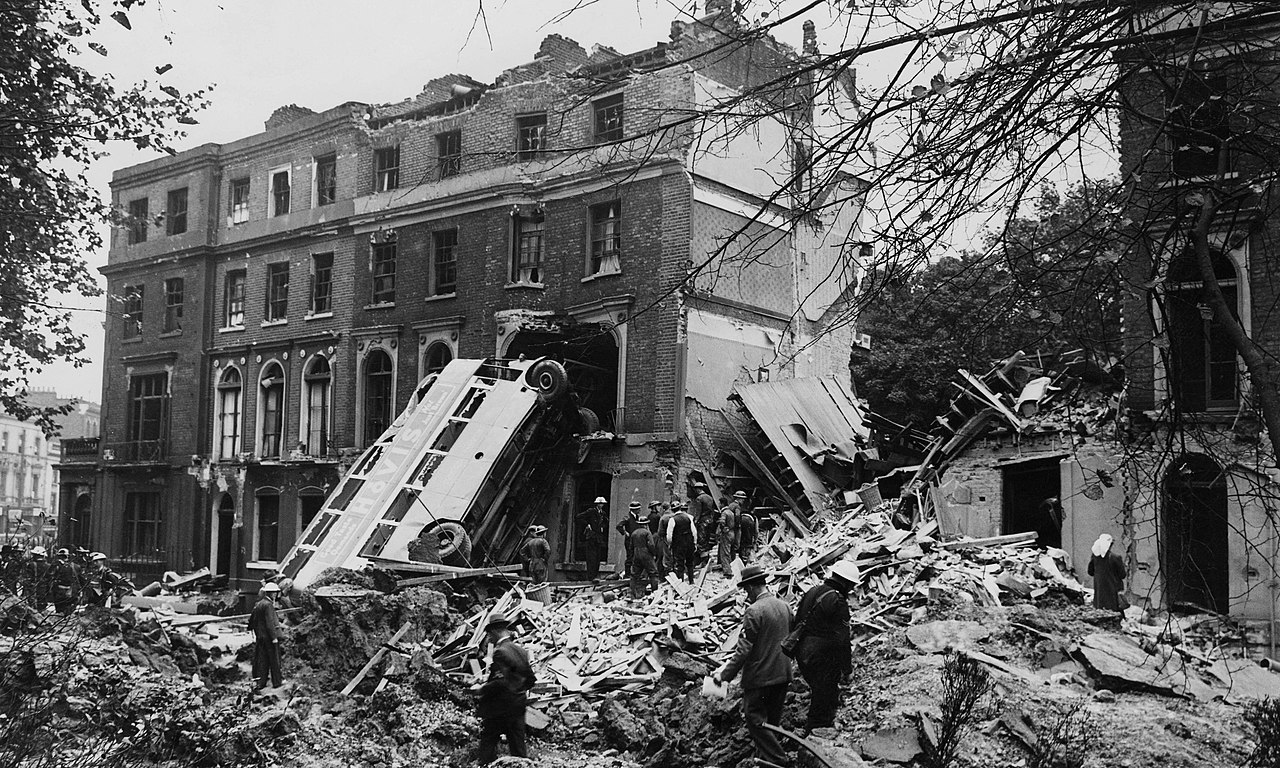Good Morning, or afternoon, or whenever you’re reading this. It’s November 14th and you’re reading This Day in Automotive History. Today we’re covering a few pivotal events that take us from across the pond, over to Indianapolis and then up to Michigan where we’ll get into GM’s first attempt at building a production electric car, way before you ever heard of Elon Musk.
1940 – The Alvis car plant in Coventry, England is bombed during a Nazi air raid

But first, we’ve got to talk about a little car company from Great Britain that just won’t quit, even after their factory was bombed by Nazis on this day in 1940. Alvis Car Company was originally founded as an engine and carburetor and engine maker under the name TG John and Co in 1919. Two years later the name was changed to Alvis by Geoffry De Freville, who designed the company’s successful first engine.
Why Alvis? Great question! Was it because de Freville combined the words Aluminum and “vis,” which means strength in Latin? No. Did he name it after Alvis, the mythological weaponsmith of Norse legend? No, again. In fact, according to de Freville himself, he chose the name simply because it could be pronounced in any language. Now, that says something about this dude’s goals, you know, taking over the world, at least the car world.

Well fast forward about 20 years from the naming of the company and some demonic chap named Adolf Hitler is now the one trying to take over the world. In his efforts to do so, the Nazi Luftwaffe drops bombs on the Alvis car plant in Coventry, England. At the time of course, it was manufacturing vehicles and other items for military purposes, including building Rolls-Royce airplane engines.
With the factory heavily damaged, automobile production wouldn’t start again until nearly the end of 1946, some one and a half-ish years after Hitler finally killed himself. That prick.

What happened to Alvis cars?
Alvis continued to manufacture drophead coupes and saloons until 1967, after the company had become part of Rover. Alas, that’s not the end of the Alvis tale. After a bit of negotiation, a company formed by former Alvis employees called Red Triangle was able to acquire trademarks and other company data, historical and otherwise. With the breadth of info available, they dreamed up a continuation series of new vehicles built from original plans of cars produced from the 1930s through the 1960s. With a few models available as of 2021, these cars are nearly identical to their originals, save for a few nondescript updates to emissions and safety systems. So, there you have it, the Nazis failed again.
1945 – Tony Hulman purchases the Indianapolis Motor Speedway from Eddie Rickenbacker for $750,000

While we’re one the subject of World War II, there’s another event that took place on this day during that era, though the war had just ended a few months prior. Although, this story starts farther back, during the Great War, the first World War. During the conflict, a US pilot named Eddie Rickenbacker shot down 26 enemies, making him the most successful Ace of the war. But he wasn’t just good in the sky, his skills at speed carried over to race cars too. In fact, he loved racing so much, Rickenbacker bought himself a race track of his own in 1927. Perhaps you’ve heard of it, it’s called the Indianapolis Motor Speedway.
Well, we could get into all sorts of history about what happened while he owned it, but I have to eat lunch soon. So, back to the second world war. Like most things that didn’t directly contribute to the war effort, the track stopped functioning, in this case, following one last 500 mile race in 1941. During the war, weeds took over, buildings began to fall into disrepair, all in all, it was a mess by the time the Nazis finally folded in 1945.

With the war over, an Indiana businessman named Tony Hulman approached Rickenbacker with an offer, $750,000 for the brickyard. They struck a deal this day in 1945 and Hulman wasted no time renovating the track. In fact, by the following May, the Indy 500 was back on!
1996 – General Motors first production electric car, the EV1, is manufactured

About four hours north of Indianapolis is Lansing, Michigan, a tad northwest of Detroit. It was here on this day in 1996 that General Motors held the initial driveaway for the EV1, the company’s first production electric car. No, Tesla didn’t start the electric car craze. In fact, electric cars were more prominent in the early 1900s than they are now. Honestly, it’d be interesting to look at EV production numbers now versus then to compare the amount of gas vehicles and electric vehicles in each era.
However, now that Electric cars are all the rage again, it’s fitting to revisit the EV1. This car truly could have been, (or was?) the start of something huge for GM. Had they stuck with it…
GM decided to produce an electric car following the successful debut of the 1990 Impact electric concept car at that year’s LA Auto Show. When the consumer version of the two seat coupe finally began to leave the factory on this day in ‘96, the inspiration was quite obvious. Offered under a lease only program, the first 660 Gen 1 cars were lead acid battery powered and had a range of 70 to 100 miles.

Was the GM EV1 successful?
Initial reaction for the vehicles with strong, especially among those lucky enough to lease one. That included Marvin Rush, a cinematographer for the television show Star Trek: Voyager, who was so concerned GM would scrap the program he spent $20,000 of his own money on radio ads for the EV1. While GM initially stated displeasure in the action, it later reimbursed him and then spent $10 million on advertising in 1997 alone. One television ad for the EV1 even earned an Emmy nomination.
The second generation came about in 1999, with some of the vehicles able to travel up to 140 miles between charges, based on its equipment. Unfortunately, on March 2, 2000, GM issued a recall for 450 Gen 1 EV1s based on the possibility of fire caused by faulty charge port cables.

GM crushes electric cars
By the end of 1999, GM shut down the EV1 production line after building just 1,117. Though no more left the line, GM would lease the vehicles as 2000 to 2003 model year vehicles. However it was in early 2002 when GM decided it would pull the vehicles from the road based on an inability to make a profit from them and high maintenance costs. General Motors began to reclaim the cars in November 2003.
While about 40 or so exist in museums and at least one resides in the private collection of Francis Ford Coppala, the rest ended up crushed, just like GM’s EV dreams. Until now, anyway. The tale of the EV1 is an extensive one. This short article is not comprehensive. Do some reading and you’ll find the story to be quite fascinating. And that, friends, is your automotive history lesson for November 14!

















